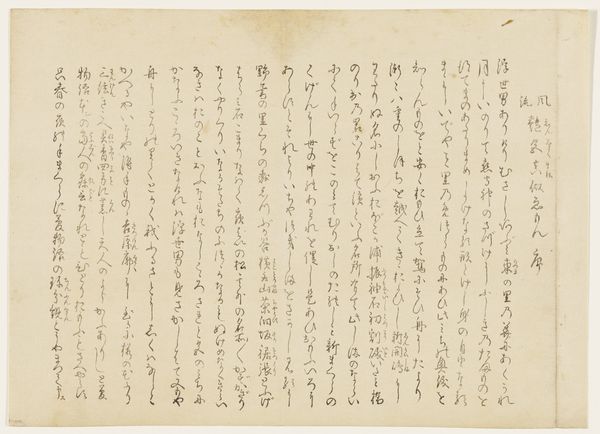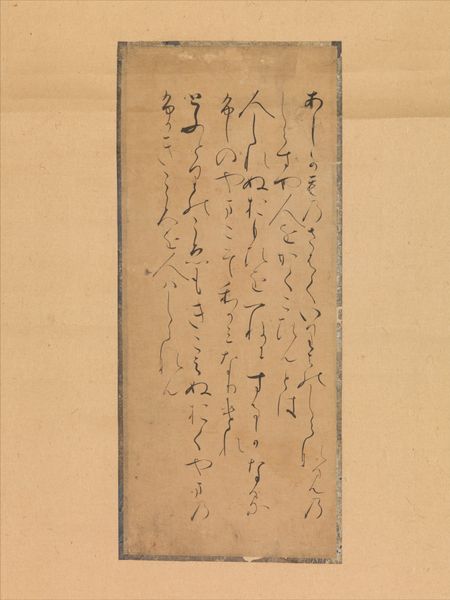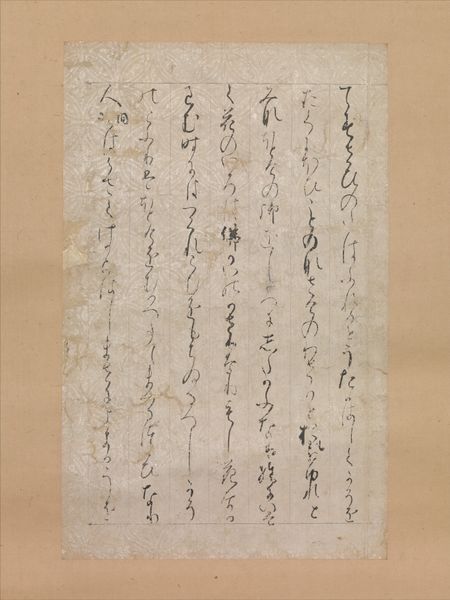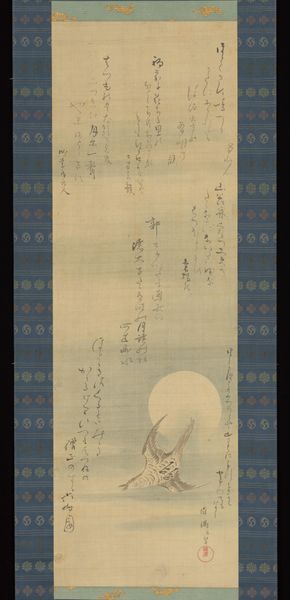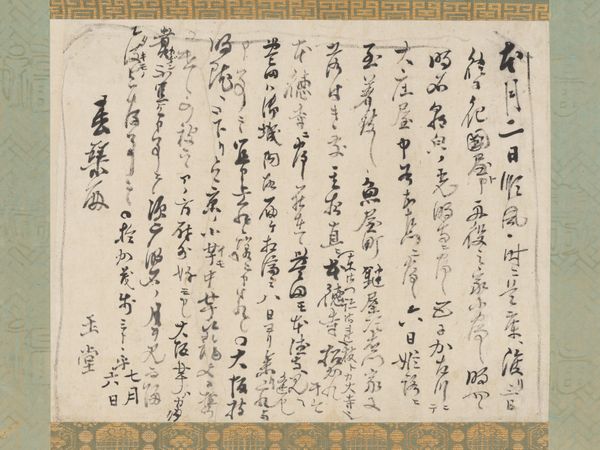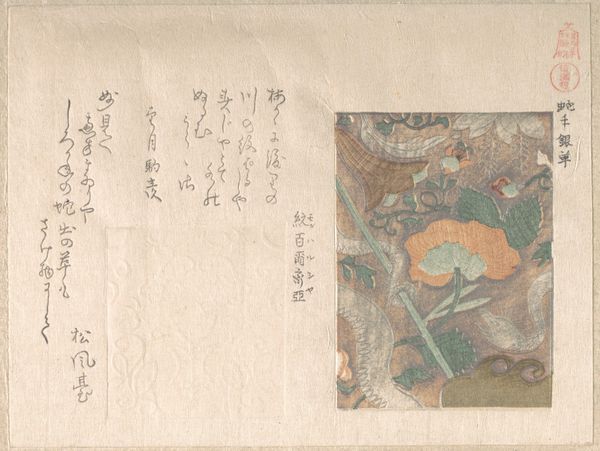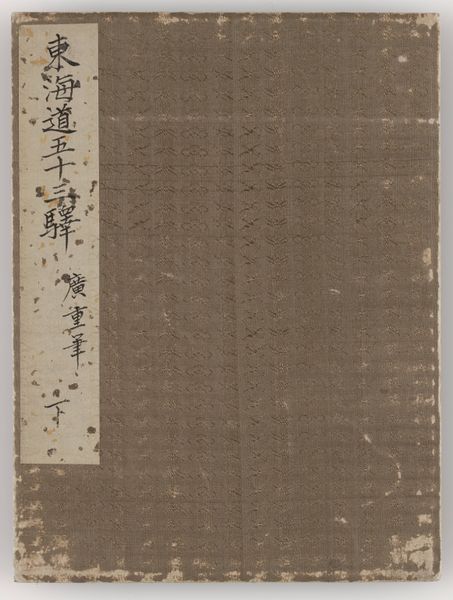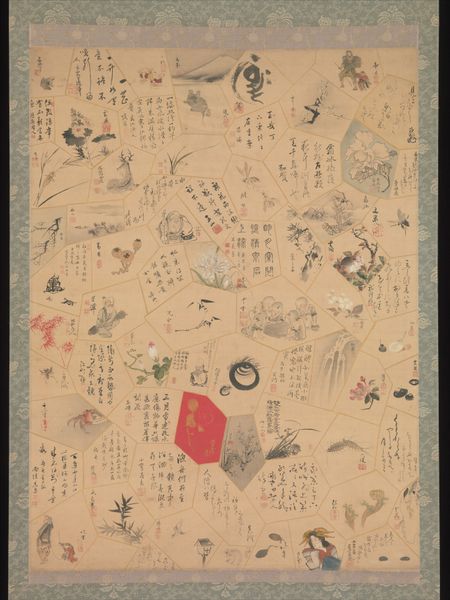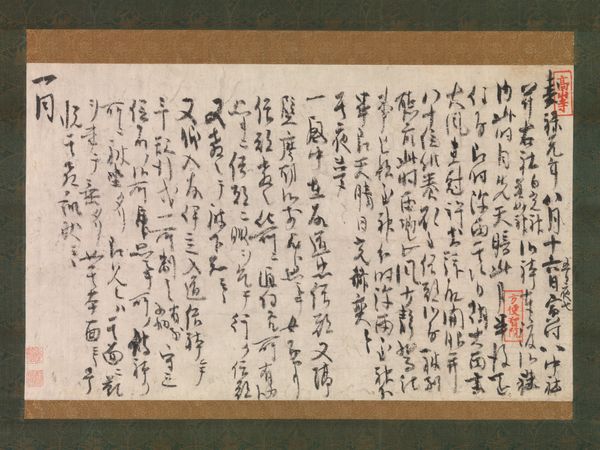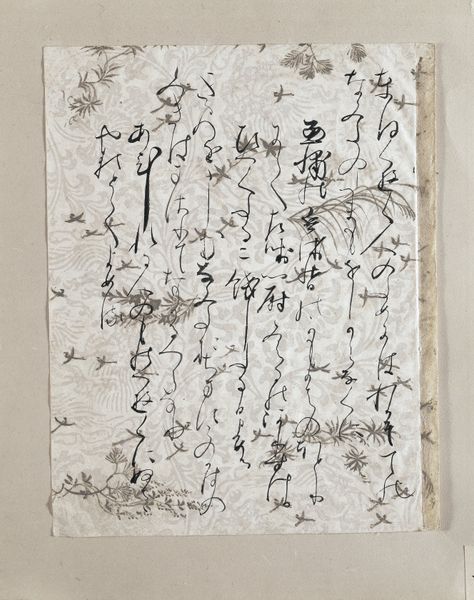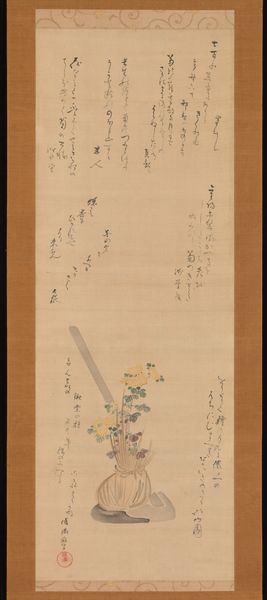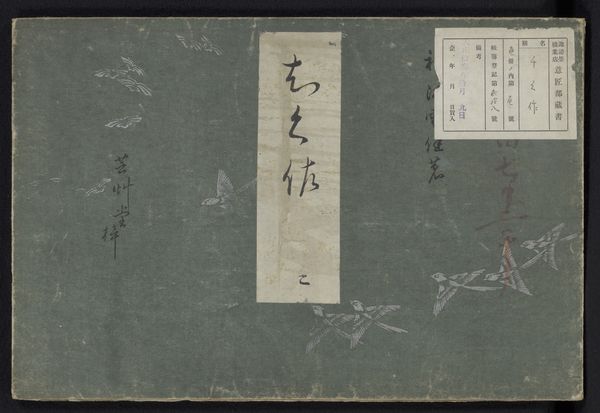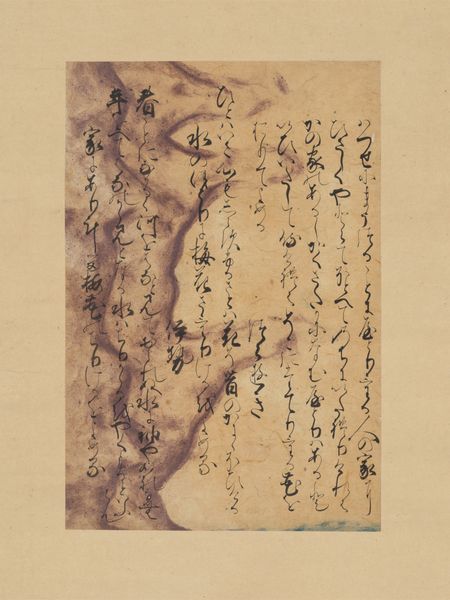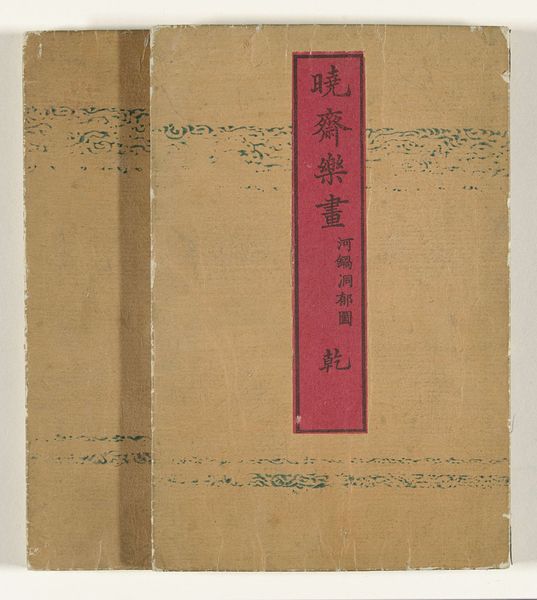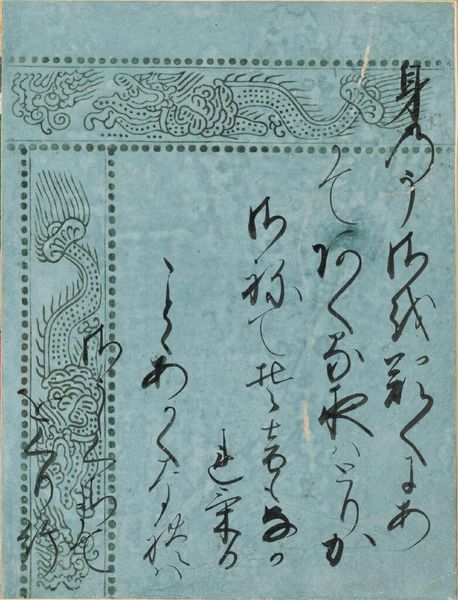
drawing, paper, ink
#
drawing
#
asian-art
#
paper
#
ink
#
calligraphy
Dimensions: 11 11/16 × 22 1/4 in. (29.69 × 56.52 cm) (image)40 1/4 × 24 13/16 in. (102.24 × 63.02 cm) (mount, without roller)
Copyright: Public Domain
Editor: Here we have a scroll entitled "Letter from Prostitute Sono" dating back to the 19th century. It’s ink on paper, a drawing, currently residing here at the Minneapolis Institute of Art. I’m struck by the layering – fragments seemingly collaged around a central panel of calligraphy. It feels like a visual echo of fragmented communication. What are your initial thoughts about it? Curator: I am particularly drawn to the materials and process used here. The collage of disparate papers speaks volumes about the available resources and perhaps the artistic ingenuity born from limitations. Notice how the artist incorporates what seems to be printed matter—likely ephemera, scraps from everyday life—to construct the background. What do you think that incorporation of mundane materials says about the traditional separation between "high" art, like calligraphy, and the everyday world? Editor: It’s as if the letter isn’t just ink on paper, but a tangible fragment of life, built from pieces of the world around Sono. Curator: Precisely. The use of found papers collapses that distinction. This wasn’t created in a vacuum; it’s a product of a specific socio-economic environment. Who had access to what materials, and what was deemed worthy of artistic attention, is the primary focus here. Are these scraps merely support, or are they integral to the meaning? I also wonder about the availability of art supplies during that period for someone in Sono’s position. Do you see a relationship between her social standing and her choice of materials? Editor: It's forcing me to consider the social and economic contexts surrounding the artwork’s creation in a very direct, material way, and consider how someone’s social status impacts the materials they use. It also makes me think of the labor involved in gathering and arranging these scraps. It redefines craft! Thanks! Curator: Exactly! This challenges us to rethink our preconceived notions about value, production, and even authorship itself. Considering the “how” and “why” behind its construction expands our understanding beyond just aesthetic appreciation. Food for thought, isn't it?
Comments
minneapolisinstituteofart over 1 year ago
⋮
A letter from Sono, a celebrated courtesan, containing a New Year's greeting to the house in Yoshiwara in which she was formerly employed. Dear Omiya-sama, / I write this letter to express my new year greeting to / you. I am very pleased to know all of your family are enjoying / with a healthy and prosperous new year and waiting for the / spring with new green leaves. Thanks to God, we have also been / same as ever. / By the way, this object which is, I am afraid, too / humble, but I am glad if you accept as a token of my seaon's / greeting to you with all the good wishes for your everlasting / happiness and prosperity. / May I ask you to extend my warm wishes to the shinzo-shu / (a group of maids who work at the courtesan's house) for me' / Sincerely yours, / Sono-Jo
Join the conversation
Join millions of artists and users on Artera today and experience the ultimate creative platform.
